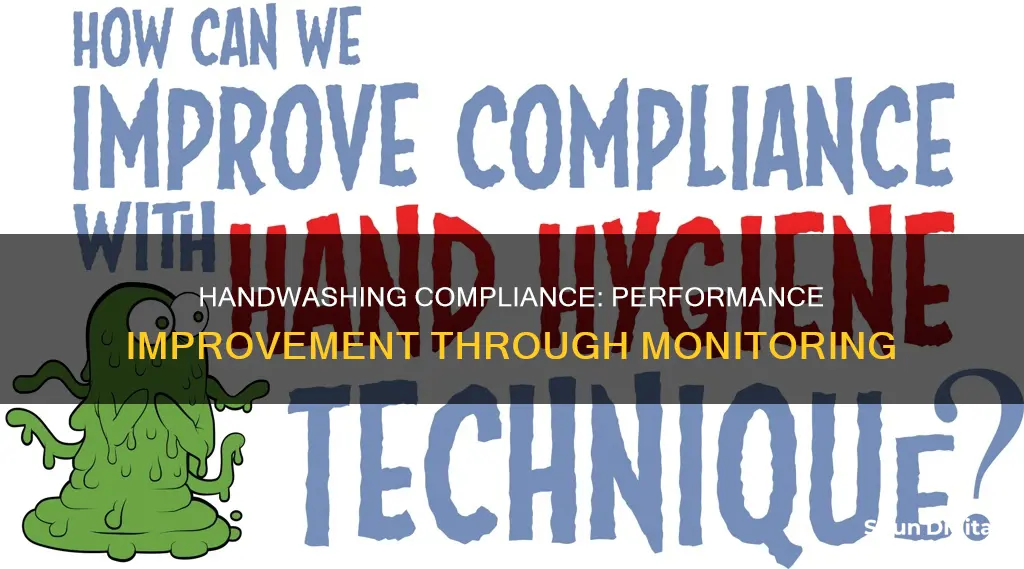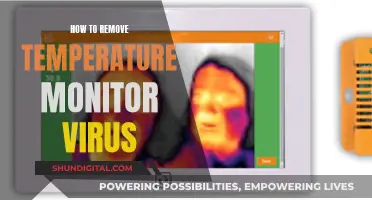
Handwashing monitoring is an important aspect of healthcare and public health, as it helps prevent the spread of healthcare-associated infections (HAIs) and reduces their transmission. HAIs are a significant challenge to patient safety and can increase patients' length of stay, costs, mortality, and morbidity.
Direct observation by trained auditors is considered the gold standard for monitoring hand hygiene compliance in healthcare settings. However, this method has limitations, including time and resource consumption, insufficient sample size, lack of standardized practices, and the Hawthorne effect, which refers to changes in behaviour being aware of being observed.
To overcome these limitations, there has been a growing interest in developing and implementing electronic hand hygiene monitoring systems as an alternative or supplementary approach. These systems can provide continuous and objective monitoring, regular feedback to staff, and real-time reminders to improve hand hygiene compliance. They can also help address issues such as social desirability bias and reactivity associated with self-reported data.
While electronic monitoring systems offer several advantages, they also have limitations and challenges. These include accuracy, data integration, privacy and confidentiality concerns, potential risks, usability issues, and associated costs. Additionally, standardized metrics to measure system performance across different electronic hand hygiene monitoring systems are currently lacking.
Overall, handwashing monitoring, whether through direct observation or electronic systems, plays a crucial role in improving hand hygiene compliance and reducing the incidence of HAIs, ultimately contributing to improved patient safety and health outcomes.
| Characteristics | Values |
|---|---|
| Monitoring methods | Direct methods: Direct observation, patient assessment, self-reporting. Indirect methods: Monitoring consumption of products, automated monitoring of the use of sinks and handrub dispensers. |
| Advantages of direct methods | Detection of hand hygiene compliance by a validated observer is considered the gold standard in hand hygiene compliance monitoring. |
| Disadvantages of direct methods | Large effort required (trained and validated staff and many working hours). |
| Advantages of indirect methods | Simple, can be continuous, and provide a global picture that remains unaffected by selection or observer bias and, most likely, observation bias. |
| Disadvantages of indirect methods | Cannot determine if hand hygiene actions are performed at the right moment during care or if the technique is correct. |
What You'll Learn
- Hand hygiene monitoring can be done via direct or indirect methods. Direct methods include direct observation, patient assessment or self-reporting by healthcare workers (HCWs). Indirect methods include monitoring consumption of products, such as soap or hand sanitiser, and automated monitoring of the use of sinks and hand sanitiser dispensers
- Electronic hand hygiene monitoring systems face issues of accuracy, data integration, privacy and confidentiality, usability, associated costs, and infrastructure improvements
- Hand hygiene monitoring systems can be used to solve other hand hygiene-related issues, such as validating the efficacy of newly proposed hand hygiene techniques and monitoring participants' levels of dementia, Alzheimer's disease, and obsessive-compulsive disorder
- The Hawthorne effect can be leveraged to stimulate hand hygiene compliance in a promotional intention
- Hand hygiene monitoring systems can be used to provide educational interventions to HCWs and improve their practices

Hand hygiene monitoring can be done via direct or indirect methods. Direct methods include direct observation, patient assessment or self-reporting by healthcare workers (HCWs). Indirect methods include monitoring consumption of products, such as soap or hand sanitiser, and automated monitoring of the use of sinks and hand sanitiser dispensers
Hand hygiene monitoring is an important indicator of performance improvement in healthcare settings. It serves multiple functions, including system monitoring, incentive for performance improvement, outbreak investigation, staffing management, and infrastructure design.
Hand hygiene monitoring can be done via direct or indirect methods. Direct methods include direct observation, patient assessment, or self-reporting by healthcare workers (HCWs). Indirect methods include monitoring the consumption of products, such as soap or hand sanitiser, and automated monitoring of the use of sinks and hand sanitiser dispensers.
Direct observation by trained auditors is considered the gold standard for monitoring hand hygiene compliance. It involves the detection of hand hygiene compliance by a validated observer and is currently the most effective method available. Direct observation allows for the detection of all hand hygiene opportunities and actions and the assessment of the number of times and appropriate timing of hand hygiene actions. However, it can be time-consuming and resource-intensive, and may be subject to observer bias.
Indirect methods, on the other hand, provide a more cost-effective and unobtrusive approach to hand hygiene monitoring. For example, the consumption of hand hygiene products, such as soap or hand sanitiser, can be monitored to estimate the number of hand hygiene actions. Automated monitoring systems, such as electronic hand hygiene monitoring systems, can also be used to track hand hygiene compliance and quality. These systems use technologies such as radio-frequency identification (RFID), infrared, ultrasound, or Bluetooth to sense dispenser actuation and HCWs' movements.
While indirect methods offer advantages in terms of cost and unobtrusiveness, they may not capture all hand hygiene opportunities and actions. Additionally, they may not assess the appropriateness of HCWs' hand hygiene timing and quality. Therefore, a combination of direct and indirect methods may be most effective in improving hand hygiene compliance and reducing healthcare-associated infections (HAIs).
Studio Monitor Stands: Which Ones Should I Buy?
You may want to see also

Electronic hand hygiene monitoring systems face issues of accuracy, data integration, privacy and confidentiality, usability, associated costs, and infrastructure improvements
Electronic hand hygiene monitoring systems face several issues, including:
- Accuracy: Systems come with different metrics without standardised measurement tools, and are affected by technical issues and geometric constraints.
- Data integration: Integrating data from multiple sensors and systems is challenging and can lead to issues such as sensor registration and calibration, data format inconsistencies, and difficulties in storing and retrieving compliance rate and quality records.
- Privacy and confidentiality: Privacy concerns may influence HCWs' attitudes towards these systems, and constant surveillance may violate patient privacy and raise legal issues. The continuous collection of personal data also raises data security concerns.
- Usability: Electronic hand hygiene monitoring systems may interrupt HCWs' daily workflow and require them to change their behaviour to ensure proper functioning. Issues include heavy and bulky wearable tags, limited sensing range, and the need to frequently replace batteries.
- Associated costs and infrastructure improvements: Implementing these systems can be costly, requiring equipment, installation, maintenance, and personnel expenses. Infrastructure improvements, such as dispenser replacement and network updates, may also be necessary.
How TV and Monitor Sizes Differ
You may want to see also

Hand hygiene monitoring systems can be used to solve other hand hygiene-related issues, such as validating the efficacy of newly proposed hand hygiene techniques and monitoring participants' levels of dementia, Alzheimer's disease, and obsessive-compulsive disorder
Hand hygiene monitoring systems can be used to monitor the hand hygiene of people with dementia, Alzheimer's disease, and obsessive-compulsive disorder. These systems can also be used to validate the efficacy of newly proposed hand hygiene techniques.
Ideal Triple Monitor Setup: Size and Resolution
You may want to see also

The Hawthorne effect can be leveraged to stimulate hand hygiene compliance in a promotional intention
Hand hygiene is one of the most effective ways to prevent healthcare-associated infections and reduce their transmission. The
Resetting Lenovo LCD Monitors: A Step-by-Step Guide
You may want to see also

Hand hygiene monitoring systems can be used to provide educational interventions to HCWs and improve their practices
Hand hygiene monitoring systems are a useful tool to provide educational interventions to healthcare workers (HCWs) and improve their practices. These systems can be used to monitor hand hygiene compliance and quality, and provide feedback to HCWs to promote behaviour change.
Types of Hand Hygiene Monitoring Systems
Hand hygiene monitoring systems can be categorised into two main types: electronic hand hygiene compliance monitoring systems and electronic hand hygiene quality monitoring systems.
Electronic Hand Hygiene Compliance Monitoring Systems
These systems focus on monitoring HCWs' compliance with hand hygiene guidelines, such as the World Health Organization's (WHO) five moments for hand hygiene. They can be further categorised into four types:
- Application-assisted direct observation: This involves using applications or smartphones to record observations, which can be more unobtrusive and reduce the Hawthorne effect compared to manual observation.
- Camera-assisted observation: Cameras are used to capture hand hygiene moments, either with human auditors or automated analysis.
- Sensor-assisted observation: Sensors are used to record hand hygiene events, such as electronic dispensers or motion sensors.
- Real-time locating systems (RTLS): These systems track HCWs' movements and hand hygiene compliance using technologies such as radio-frequency identification (RFID), infrared, or Bluetooth.
Electronic Hand Hygiene Quality Monitoring Systems
These systems focus on monitoring the quality of hand hygiene practices, such as compliance with the WHO's six-step hand hygiene technique or surface coverage of hand hygiene products. They can use fluorescent substances and computer vision algorithms to evaluate hand hygiene quality.
Benefits of Hand Hygiene Monitoring Systems
Hand hygiene monitoring systems offer several benefits for improving HCWs' practices:
- Objective measurement: These systems provide an objective and accurate measurement of hand hygiene compliance and quality, reducing the bias associated with self-reporting or direct observation.
- Real-time feedback: HCWs can receive instant prompts and periodic summaries to remind them about missed hand hygiene opportunities and improve their hand hygiene quality.
- Behaviour change: By providing regular feedback and education, these systems can create a sustained Hawthorne effect and improve HCWs' hand hygiene habits over time.
- Infection reduction: Ultimately, improving hand hygiene compliance and quality can reduce the incidence of healthcare-associated infections (HAIs) and improve patient safety.
Challenges and Limitations
However, there are also challenges and limitations to consider when using hand hygiene monitoring systems:
- Accuracy and standardisation: The accuracy of these systems can be affected by technical issues, geometric constraints, and a lack of standardised metrics for comparing different systems.
- Data integration: Integrating data from multiple sensors and systems can be complex and raise issues of privacy and confidentiality.
- Usability and cost: The systems may require changes to HCWs' workflows and infrastructure improvements, and the associated costs of equipment, installation, and maintenance can be high.
- Potential risks: There are potential risks associated with the use of certain technologies, such as UV lamps for hand hygiene quality assessment, and the disruption of existing infrastructure during installation.
Spyware Detection: Enhancing Monitoring with Counter Surveillance Techniques
You may want to see also
Frequently asked questions
Handwashing monitoring is a crucial aspect of performance improvement in healthcare settings as it helps prevent healthcare-associated infections (HAIs) and reduces their transmission. By monitoring handwashing compliance and providing feedback to healthcare workers, hospitals can improve hand hygiene practices and ultimately enhance patient safety.
Handwashing monitoring systems offer several benefits, including:
- Continuous and objective monitoring: These systems can provide real-time data on hand hygiene compliance, eliminating the issues associated with human observation.
- Regular feedback: The systems can provide frequent and individualized feedback to healthcare workers, helping to improve compliance rates.
- Real-time reminders: Some systems offer reminders to staff, such as vibrations when they enter or exit a patient's room without washing their hands, addressing the common issue of forgetfulness.
- Improved hand hygiene culture: By realizing that they are being continuously monitored, healthcare workers may experience an enhanced Hawthorne effect, leading to sustained behaviour change.
While handwashing monitoring systems offer several advantages, they also come with certain limitations and challenges:
- Cost: The implementation and maintenance of electronic monitoring systems can be expensive, and hospitals need to consider the costs against the potential benefits of improved hand hygiene compliance.
- Privacy and confidentiality concerns: The continuous collection of personal data and constant surveillance may raise privacy and legal issues, especially when cameras and microphones are involved.
- Usability: The technology may interrupt healthcare workers' daily workflows and require them to change their behaviours to ensure proper functioning.
- System accuracy: The accuracy of handwashing monitoring systems can be affected by technical issues, geometric constraints, and a lack of standardized metrics, making it challenging to compare data across different studies.
To effectively implement handwashing monitoring and improve hand hygiene compliance:
- Combine monitoring with feedback and education: Providing regular feedback and educational interventions to healthcare workers can help improve their hand hygiene techniques and habits.
- Address the "why" and "how" of handwashing: Emphasize the importance of handwashing and provide clear, simple instructions on proper handwashing techniques.
- Create a culture of hand hygiene: Work on changing the safety culture within the organization and make hand hygiene a priority for all staff.
- Utilize a comprehensive approach: Combine handwashing monitoring with other interventions such as system improvements and behavioural incentives to achieve sustained behaviour change.







